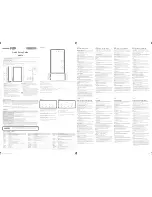
Chapter 1. Introducing Your IBM Network Color Printer
1–3
The Hold Queue
The Hold queue is a job storage area. When you submit a job to the Hold
queue, the printer receives the job and stores the job on the printer’s hard
disk. Jobs in the Hold queue do not print or clear from the printer until
someone uses the Spooler utility to move them to the Print queue or to
discard them from the printer’s hard disk.
The Direct Queue
The Direct queue provides a direct connection to the Network Color Printer,
bypassing the printer’s hard disk. When you submit a job to the Direct queue,
the printer accepts the job when it is ready to print the job. The Direct queue
does not store jobs on the printer’s hard disk and so does not provide job
spooling. This provides a measure of security for sensitive documents, such
as personnel or payroll documents.
Jobs submitted to the Direct queue stay on the submitting server,
workstation, PC, or Macintosh and keep it busy spooling the job until the
printer is between Print queue jobs. Then the printer pauses the Print queue
to process one Direct queue job.
Note:
Printing to the Direct queue can take a long time if the job the printer is
currently processing takes a long time or if many jobs are going to the
Direct queue.
Performance
The 32-MB printer configuration is best suited for print jobs with
medium-to-large sized color image areas. Medium image areas cover less
than one-fourth of a page; large image areas cover one-fourth to one-half of
a page.
With the 32-MB printer configuration, most print jobs with medium-sized
image areas will print at 3 ppm. Some print jobs with large image areas may
print at less than 3 ppm, but all will print with the highest quality.
The 48-MB printer configuration is best for print jobs with large-sized to
full-page sized image areas. With the 48-MB configuration, most print jobs
will print at 3 ppm, and all will print with the highest quality.
Summary of Contents for System Storage
Page 1: ...IBM Network Color Printer Administrator s Guide S544 5364 01...
Page 24: ...2 8 Administrator s Guide...
Page 66: ...A 2 Administrator s Guide...
Page 76: ...B 10 Administrator s Guide...
Page 94: ...X 18 Administrator s Guide...
















































